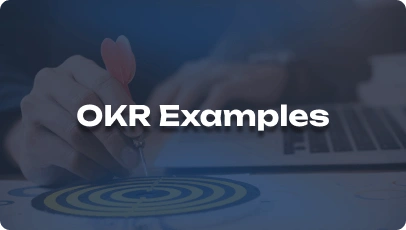Bi Consultant plays a crucial role in the Analytics industry by enabling organizations to extract valuable insights from data to drive informed decision-making. Mastering Bi Consultant skills can lead to improved operational efficiency, enhanced strategic planning, and competitive advantage in today’s data-driven landscape. As the demand for data analytics continues to grow, professionals proficient in Bi Consulting are highly sought after to help businesses harness the power of their data effectively.
1. What are the key components of a successful Bi Consultant strategy?
A successful Bi Consultant strategy involves understanding business objectives, selecting the right tools, designing efficient data models, and creating intuitive visualizations for actionable insights.
2. How do you ensure data quality and integrity in Bi Consultant projects?
Data quality and integrity in Bi Consultant projects can be ensured through data profiling, cleansing, standardization, and establishing data governance practices.
3. Can you explain the role of data visualization in Bi Consulting?
Data visualization in Bi Consulting helps in presenting complex data in a visually appealing and easy-to-understand format, enabling stakeholders to grasp insights quickly and make data-driven decisions.
4. How do you approach data modeling in Bi Consultant projects?
Approaching data modeling involves understanding business requirements, defining data relationships, creating logical and physical data models, and optimizing performance for efficient data analysis.
5. What are the common challenges faced by Bi Consultants in implementing analytics solutions?
Common challenges include data silos, poor data quality, resistance to change, scalability issues, and aligning analytics with business goals.
6. How do you stay updated with the latest trends and technologies in the Analytics industry?
Staying updated involves continuous learning through online resources, attending industry conferences, participating in webinars, and hands-on experience with new tools and technologies.
7. Can you discuss a successful Bi Consultant project you worked on and the impact it had on the organization?
Discuss a specific project highlighting the problem solved, methodologies used, key insights generated, and the positive outcomes or improvements achieved for the organization.
8. How do you approach translating business requirements into technical solutions in Bi Consulting?
Translating business requirements involves conducting thorough requirements analysis, collaborating with stakeholders, designing scalable solutions, and ensuring alignment between business needs and technical capabilities.
9. What role does data governance play in Bi Consultant projects, and how do you ensure compliance?
Data governance ensures data quality, security, and compliance with regulations. It involves establishing data policies, implementing access controls, monitoring data usage, and conducting regular audits.
10. How do you handle data security and privacy concerns in Bi Consultant projects?
Data security and privacy concerns are addressed through encryption, access controls, anonymization techniques, compliance with data protection regulations, and implementing secure data handling practices.
11. What are the advantages of using cloud-based Bi tools in Analytics projects?
Cloud-based Bi tools offer scalability, flexibility, cost-effectiveness, real-time data processing, and seamless collaboration, making them ideal for modern Analytics projects.
12. How do you approach performance tuning and optimization in Bi Consultant solutions?
Performance tuning involves identifying bottlenecks, optimizing queries, indexing data for faster retrieval, leveraging in-memory processing, and monitoring system performance to ensure optimal Bi solution performance.
13. Can you discuss a scenario where you had to deal with unstructured data in a Bi Consultant project?
Share a situation where you encountered unstructured data, explain how you structured and analyzed it, and discuss the insights gained from processing unstructured data in the project.
14. How do you handle stakeholder expectations and communicate insights effectively in Bi Consultant projects?
Handling stakeholder expectations involves active communication, understanding their needs, presenting insights in a clear and actionable manner, and incorporating feedback to deliver valuable analytics solutions.
15. What are the key performance indicators (KPIs) you consider when evaluating the success of a Bi Consultant project?
Key performance indicators may include data accuracy, query performance, user adoption, business impact, cost-effectiveness, and alignment with strategic objectives.
16. How do you approach data storytelling to make insights more compelling in Bi Consultant deliverables?
Data storytelling involves crafting a narrative around data insights, using visualizations to support the story, connecting data to real-world scenarios, and engaging stakeholders to drive informed decision-making.
17. What tools and technologies are essential for a Bi Consultant to be proficient in today’s Analytics landscape?
Essential tools and technologies include BI platforms (e.g., Tableau, Power BI), ETL tools (e.g., Informatica, Talend), data visualization tools, SQL databases, cloud services, and programming languages like Python and R for analytics.
18. How do you approach data preparation and transformation in Bi Consultant projects?
Data preparation involves extracting data from various sources, cleaning, transforming, and loading it into a structured format suitable for analysis, ensuring data consistency and accuracy throughout the process.
19. Can you explain the concept of self-service BI and its impact on organizations?
Self-service BI empowers users to access and analyze data independently without IT intervention, enabling faster decision-making, improved data literacy, and agility in exploring insights across the organization.
20. How do you ensure that Bi solutions are user-friendly and cater to the needs of diverse stakeholders?
Ensuring user-friendliness involves conducting user interviews, gathering feedback, designing intuitive interfaces, providing training and support, and customizing dashboards to meet the specific needs of different user groups.
21. How do you approach data governance and compliance with data protection regulations in Bi projects?
Data governance involves defining data ownership, establishing data policies, securing sensitive data, ensuring compliance with regulations like GDPR and HIPAA, and implementing controls to protect data privacy and integrity.
22. Can you discuss a challenging situation you encountered in a Bi Consultant project and how you resolved it?
Share a challenging scenario, describe your approach to problem-solving, the steps taken to address the issue, and the lessons learned from overcoming challenges in the project.
23. What strategies do you employ to ensure Bi solutions are scalable and meet evolving business needs?
Strategies for scalability include designing flexible architectures, leveraging cloud resources, optimizing data models, monitoring performance metrics, and aligning Bi solutions with long-term business goals.
24. How do you approach data visualization best practices to create impactful dashboards in Bi projects?
Data visualization best practices involve choosing appropriate chart types, designing visually appealing layouts, using color schemes effectively, emphasizing key insights, and ensuring dashboard interactivity for enhanced user engagement.
25. Can you discuss the importance of data democratization in Bi projects and its impact on decision-making?
Data democratization involves making data accessible to all users, fostering a data-driven culture, enabling informed decision-making at all levels of the organization, and promoting transparency through shared insights.
26. How do you collaborate with cross-functional teams to ensure successful implementation of Bi solutions?
Collaboration involves understanding team roles, aligning goals, fostering open communication, sharing insights, gathering feedback, and ensuring that Bi solutions meet the diverse needs of stakeholders across departments.
27. How do you approach data security and privacy considerations when integrating data from multiple sources in Bi projects?
Data integration involves implementing encryption, access controls, data masking, anonymization techniques, and ensuring compliance with data privacy regulations to protect sensitive information when combining data from diverse sources.
28. Can you discuss the impact of artificial intelligence and machine learning on Bi Consulting and Analytics projects?
AI and ML technologies enhance predictive analytics, automate data processing tasks, uncover hidden patterns in data, improve decision-making accuracy, and drive innovation in Bi Consulting by enabling advanced analytics capabilities.
29. How do you approach change management in Bi Consultant projects to ensure successful adoption of analytics solutions?
Change management involves stakeholder engagement, training programs, communication plans, addressing resistance to change, measuring adoption rates, and continuously improving user experience to drive successful adoption of analytics solutions.
30. What are your recommendations for organizations looking to embark on a Bi Consulting project for the first time?
Recommendations may include conducting a thorough needs assessment, defining clear objectives, selecting the right Bi tools, building a skilled team, establishing data governance practices, and setting realistic expectations for the project’s scope and outcomes.






